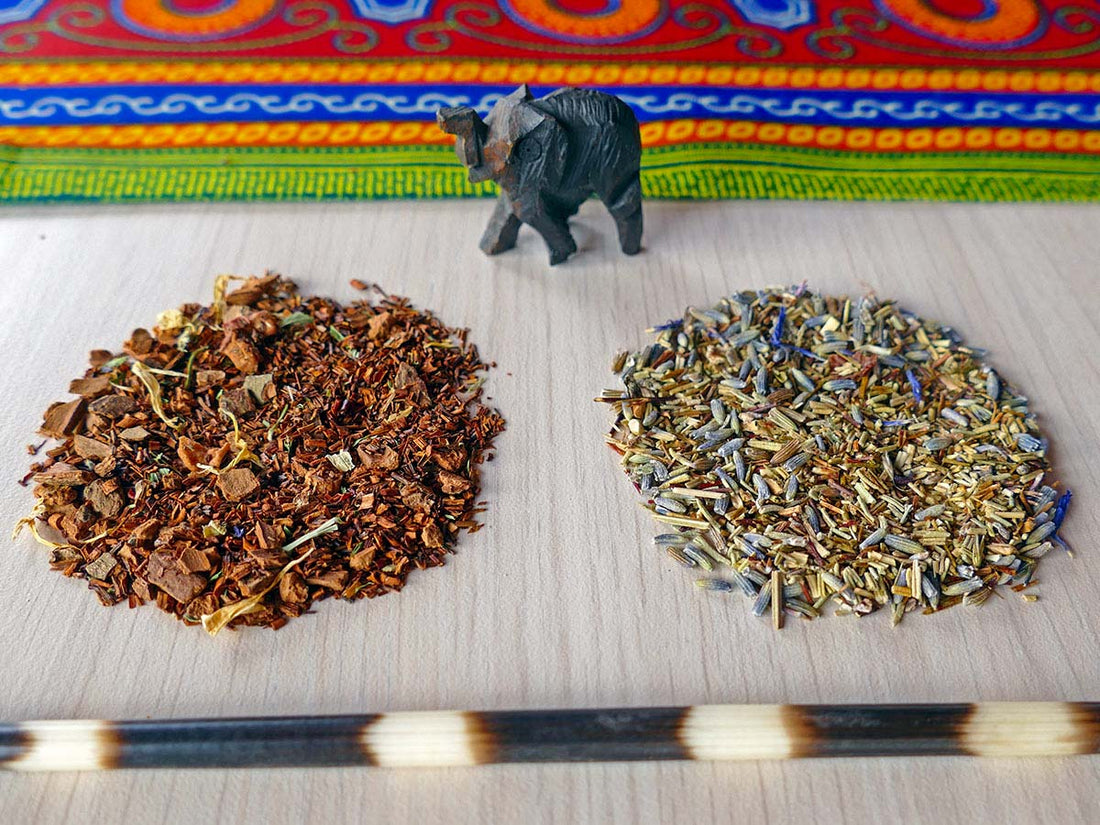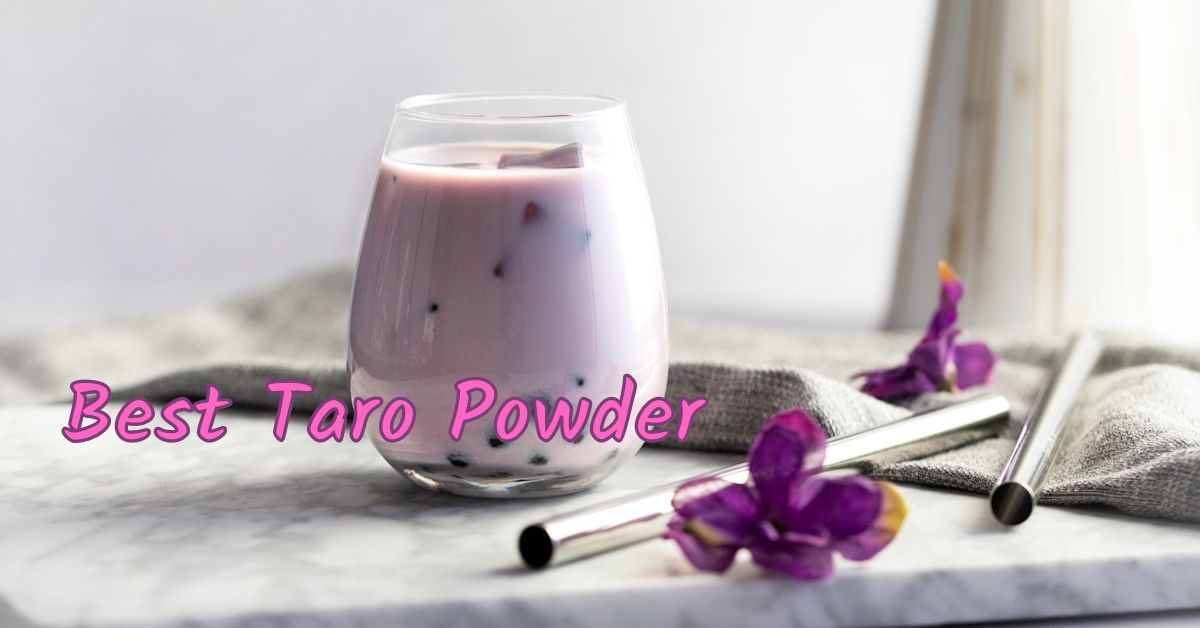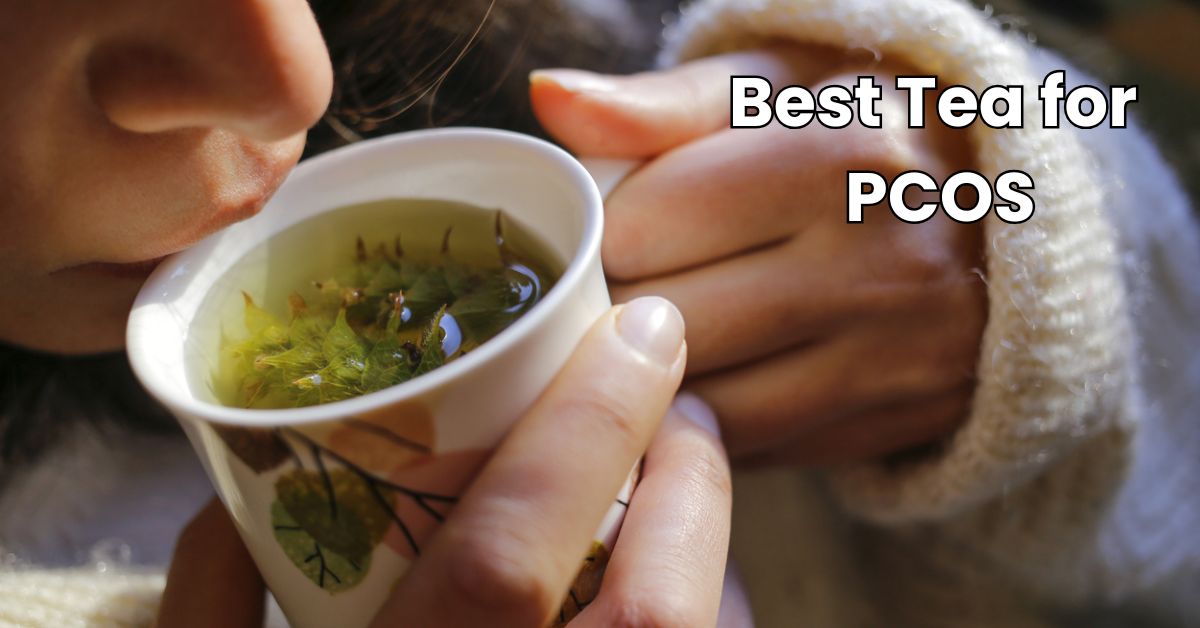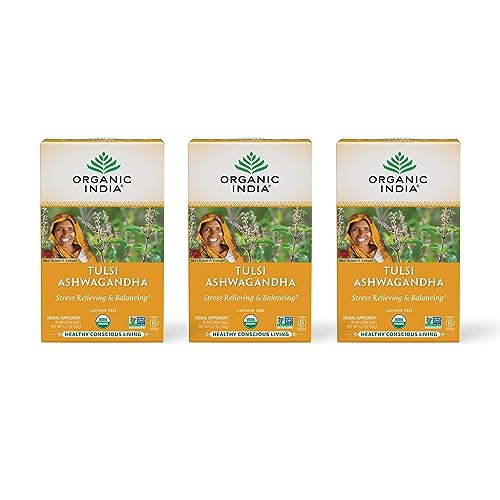Green rooibos tea and red rooibos tea both come from the same plant. Yet, they offer different flavors and benefits.
This blog will help you understand their differences and choose the right one for you. Rooibos tea, a popular herbal drink from South Africa, has two main types: green and red. Each type undergoes a different processing method, which affects their taste and health benefits.
Green rooibos is less oxidized, retaining more antioxidants and having a lighter flavor. Red rooibos, on the other hand, is fully oxidized, giving it a rich, sweet taste. Knowing the differences between these teas can help you select the perfect brew for your taste and health goals. Dive in to explore which rooibos tea suits you best!

Credit: www.plumdeluxe.com
Introduction To Rooibos Tea
Rooibos tea is a popular beverage made from the leaves of the Aspalathus linearis plant. It comes in two main types: Green Rooibos Tea and Red Rooibos Tea. Both types offer unique flavors and health benefits. This tea is naturally caffeine-free, making it a great choice for those sensitive to caffeine. Let’s dive deeper into its origin, history, and the different types available.
Origin And History
Rooibos tea originates from South Africa, specifically the Cederberg region. The indigenous Khoisan people have used it for centuries. They discovered its health benefits and unique taste. European settlers in the 18th century started to use it as a substitute for black tea. Since then, rooibos tea has gained international popularity. Today, it is enjoyed worldwide for its natural sweetness and health benefits.
Types Of Rooibos Tea
There are two main types of rooibos tea: Green Rooibos Tea and Red Rooibos Tea.
- Green Rooibos Tea: This type is less processed. The leaves are dried immediately after harvesting. It retains a higher level of antioxidants. The flavor is light and grassy, similar to green tea.
- Red Rooibos Tea: This type undergoes fermentation. The leaves turn a reddish-brown color. It has a sweet, earthy flavor. Fermentation reduces some antioxidant levels but adds to the rich taste.
| Type | Processing Method | Flavor | Antioxidant Level |
|---|---|---|---|
| Green Rooibos Tea | Dried immediately, no fermentation | Light, grassy | Higher |
| Red Rooibos Tea | Fermented | Sweet, earthy | Moderate |
Green Rooibos Tea
Green Rooibos Tea is a lesser-known variety of the popular Rooibos tea. Unlike its red counterpart, it undergoes minimal oxidation, preserving its natural green color. This unique processing method gives it a distinct flavor and a different nutritional profile. Let’s explore more about Green Rooibos Tea.
Processing Methods
Green Rooibos Tea is produced through a delicate process. The leaves are harvested and immediately dried, preventing oxidation. This process keeps the leaves green and retains more natural antioxidants.
In contrast, Red Rooibos undergoes oxidation, which turns the leaves red-brown. The difference in processing impacts the flavor and health benefits of the tea.
Nutritional Profile
Green Rooibos Tea is rich in antioxidants. It contains aspalathin and nothofagin, which have potential health benefits. These antioxidants help combat free radicals in the body.
| Nutrient | Green Rooibos |
|---|---|
| Antioxidants | High |
| Calcium | Moderate |
| Fluoride | Low |
Green Rooibos is also caffeine-free, making it a great alternative to traditional teas. It’s suitable for all ages and can be consumed any time of the day.
Its light, grassy flavor is refreshing and can be enjoyed both hot and cold. The minimal processing ensures it retains a higher level of natural nutrients.
Red Rooibos Tea
Red Rooibos Tea, also known as Aspalathus Linearis, is a popular herbal tea from South Africa. It is known for its rich, sweet flavor and numerous health benefits. Unlike traditional black or green tea, red rooibos is caffeine-free, making it a perfect choice for those who want to reduce their caffeine intake.
Processing Methods
Red rooibos tea undergoes a unique fermentation process. Freshly harvested rooibos leaves are bruised and left to ferment. This process turns the leaves a deep red color, giving the tea its name. The leaves are then dried in the sun, enhancing their flavor and aroma. The fermentation process also helps develop the tea’s distinctive sweet taste.
Nutritional Profile
Red rooibos tea is rich in antioxidants, particularly aspalathin and nothofagin. These antioxidants help fight free radicals, reducing oxidative stress. The tea contains important minerals like calcium, potassium, and magnesium. These minerals support overall health and well-being. Red rooibos is also low in tannins, making it a gentle option for those with sensitive stomachs.
Antioxidant Properties
Antioxidant properties are a key factor when comparing green rooibos tea and red rooibos tea. Both types of tea are rich in antioxidants, which help protect the body from damage caused by free radicals. Understanding the specific antioxidants present in each type can help you choose the right tea for your health needs.
Green Rooibos Antioxidants
Green rooibos tea is less oxidized than red rooibos. This means it retains more of its natural antioxidants. Here are some key antioxidants found in green rooibos tea:
- Polyphenols: These compounds help fight inflammation and reduce the risk of chronic diseases.
- Flavonoids: Known for their ability to improve heart health and boost the immune system.
- Aspalathin: Unique to rooibos, it helps regulate blood sugar levels and supports weight management.
Green rooibos tea has a milder taste compared to red rooibos. It’s an excellent choice for those who prefer a lighter flavor.
Red Rooibos Antioxidants
Red rooibos tea undergoes a fermentation process, which gives it a rich color and robust flavor. Despite the fermentation, it still contains many beneficial antioxidants:
- Quercetin: Helps reduce allergies and supports heart health.
- Chrysoeriol: Promotes healthy blood circulation and has anti-inflammatory properties.
- Nothofagin: Works alongside aspalathin to provide strong antioxidant effects.
Red rooibos tea has a stronger, earthier flavor. It’s perfect for those who enjoy a more robust cup of tea.
Both green and red rooibos teas are excellent sources of antioxidants. Choosing between them depends on your taste preference and specific health goals.
Impact On Heart Health
Green rooibos tea and red rooibos tea both offer heart health benefits. Understanding their differences can help you make an informed choice. Here, we explore how each type of rooibos tea impacts heart health.
Green Rooibos Benefits
Green rooibos tea is rich in antioxidants. These antioxidants help reduce oxidative stress. Lower oxidative stress means better heart health. Green rooibos also helps lower blood pressure. High blood pressure can lead to heart problems. Drinking green rooibos regularly can support a healthy heart.
This tea also contains aspalathin. Aspalathin helps regulate blood sugar levels. Stable blood sugar levels contribute to overall heart health. Green rooibos tea is also caffeine-free. This makes it a safe choice for those with heart conditions.
Red Rooibos Benefits
Red rooibos tea offers its own heart health benefits. It is packed with flavonoids. Flavonoids help improve blood circulation. Better blood circulation supports heart health. Red rooibos also helps reduce bad cholesterol levels. Lower cholesterol levels mean a healthier heart.
Red rooibos tea is also caffeine-free. Caffeine can increase heart rate and blood pressure. Choosing red rooibos can help avoid these risks. Red rooibos also has anti-inflammatory properties. Reducing inflammation can lower the risk of heart disease.
Effects On Digestion
Rooibos tea, known for its distinctive flavor and health benefits, offers two varieties: Green Rooibos and Red Rooibos. Each type has unique effects on digestion. Let’s explore how these teas can support your digestive health.
Green Rooibos Digestive Aid
Green Rooibos tea is less oxidized than its red counterpart. This results in higher antioxidant levels. These antioxidants can help reduce inflammation in the digestive tract. A calm digestive system means fewer issues like bloating or cramps.
Green Rooibos is also rich in flavonoids. Flavonoids support healthy digestion by soothing the stomach lining. This can be particularly beneficial for people with sensitive stomachs.
Another benefit is its low tannin content. Tannins can sometimes cause stomach discomfort. Green Rooibos has minimal tannins, making it gentle on the stomach.
Red Rooibos Digestive Aid
Red Rooibos tea undergoes full oxidation. This process gives it a rich, earthy flavor. Red Rooibos also contains antioxidants, though in slightly lower quantities than green.
Red Rooibos has antispasmodic properties. These properties can relax the muscles in the digestive system. This relaxation helps prevent issues like stomach cramps and spasms.
Additionally, Red Rooibos is caffeine-free. Caffeine can sometimes irritate the stomach lining, so a caffeine-free option is beneficial for digestion.
To summarize the digestive benefits of both teas, see the comparison table below:
| Green Rooibos | Red Rooibos |
|---|---|
| Higher in antioxidants | Rich, earthy flavor |
| Calms inflammation | Antispasmodic properties |
| Low tannin content | Caffeine-free |
Skin Health Benefits
Green rooibos tea and red rooibos tea both promote healthy skin. Green rooibos has more antioxidants, which fight aging. Red rooibos soothes skin and reduces inflammation. Both teas offer valuable benefits for maintaining radiant skin.
Rooibos tea is known for its numerous health benefits. Among these, skin health stands out. Both green and red rooibos teas offer unique advantages for the skin. They are rich in antioxidants and minerals that promote a healthy complexion.Green Rooibos For Skin
Green rooibos tea is less processed than red rooibos. This means it retains more antioxidants. These antioxidants fight free radicals. Free radicals can damage skin cells. By reducing this damage, green rooibos helps maintain youthful skin. Green rooibos is also anti-inflammatory. It soothes irritated skin. People with eczema or acne may find relief. The tea’s high flavonoid content supports skin health. It helps in reducing redness and swelling.Red Rooibos For Skin
Red rooibos tea is fermented. This process enhances its flavor. It also provides different benefits for the skin. Red rooibos is rich in alpha hydroxy acid. This acid is popular in skincare. It helps exfoliate the skin. Exfoliation removes dead skin cells. This results in a smoother complexion. Red rooibos also contains zinc. Zinc promotes healing. It can reduce acne scars and blemishes. The antioxidants in red rooibos protect the skin from aging. They help reduce wrinkles and fine lines. Both teas offer unique skin benefits. Choosing between them depends on your skin needs. “`
Credit: carmientea.co.za
Choosing Between Green And Red
Choosing between Green Rooibos Tea and Red Rooibos Tea can be a delightful yet challenging task. Each type offers unique benefits and tastes that cater to different preferences and health goals. This section will help you make an informed decision based on flavor and personal health objectives.
Flavor And Taste
Green Rooibos Tea has a light, grassy flavor. It resembles green tea but is caffeine-free. The taste is fresh and mild, often appreciated by those who prefer a subtle tea experience.
Red Rooibos Tea has a sweet, nutty flavor. It is more robust and rich compared to its green counterpart. The taste is smooth, making it a favorite for those who enjoy a fuller tea experience.
Personal Health Goals
Green Rooibos Tea is rich in antioxidants. It is ideal for those seeking to boost their immune system. The low tannin levels make it gentle on the stomach.
Red Rooibos Tea also contains antioxidants. It promotes heart health and aids in digestion. The lack of caffeine makes it a perfect choice for bedtime.
Both types offer unique health benefits. Your choice depends on your personal health goals and taste preference.

Credit: www.facebook.com
Frequently Asked Questions
What Is Green Rooibos Tea?
Green rooibos tea is an unfermented version of rooibos. It retains more antioxidants and has a milder taste.
How Does Red Rooibos Tea Differ?
Red rooibos tea is fermented, giving it a rich flavor. It has slightly fewer antioxidants than green rooibos.
Which Rooibos Tea Is Healthier?
Green rooibos tea is considered healthier due to higher antioxidant levels. Both types offer health benefits.
Does Green Rooibos Tea Contain Caffeine?
No, green rooibos tea is naturally caffeine-free. It’s a great option for those avoiding caffeine.
Conclusion
Green Rooibos Tea and Red Rooibos Tea both have unique benefits. Green Rooibos offers a light, fresh taste. Red Rooibos provides a rich, sweet flavor. Both types are caffeine-free and full of antioxidants. Choosing between them depends on your taste preference.
Enjoy exploring these healthy tea options. Savor each cup and experience their unique qualities.






